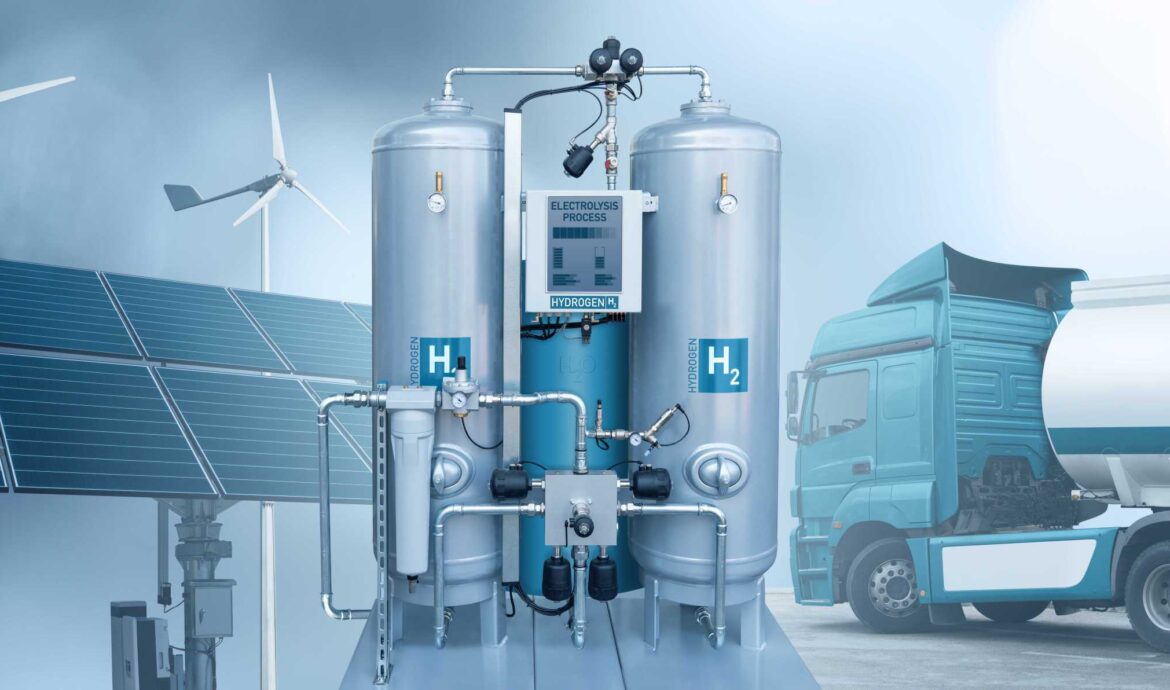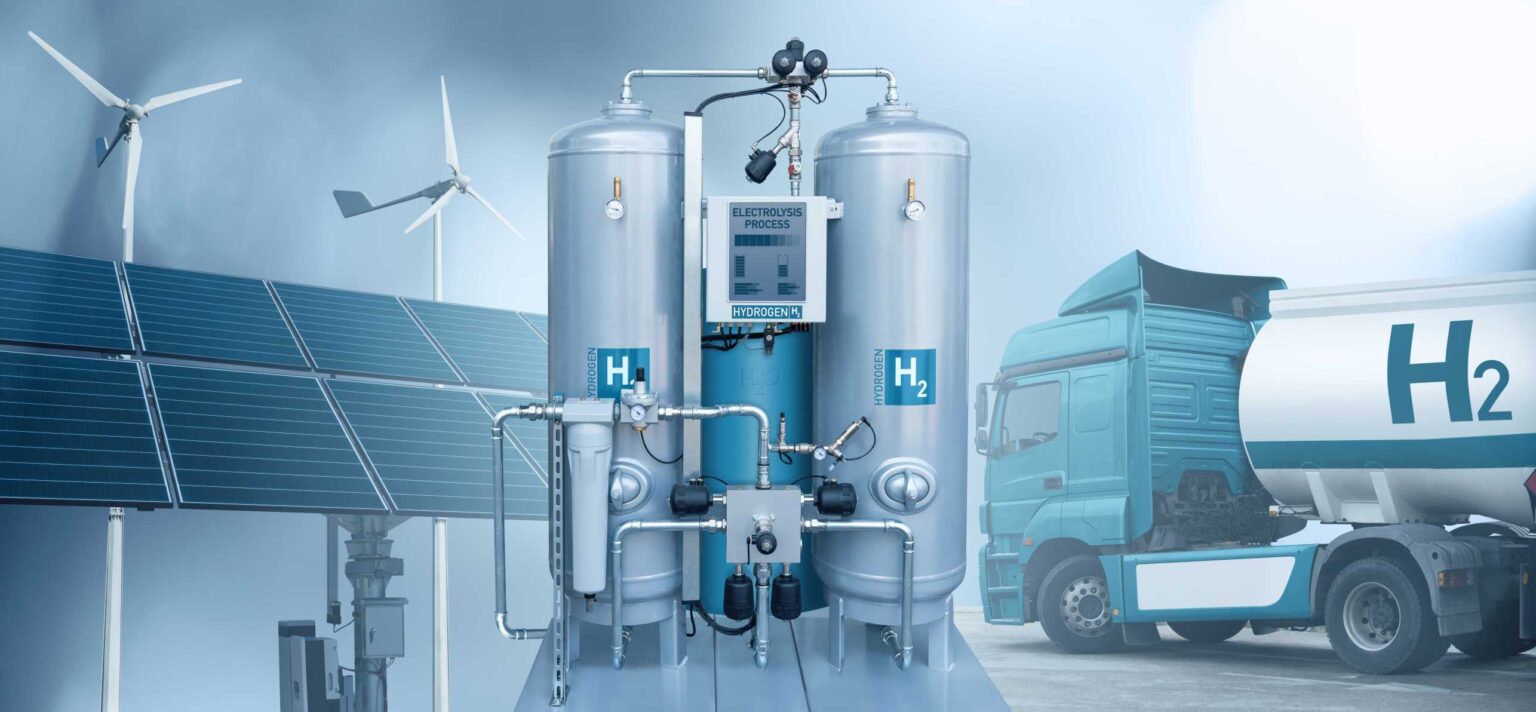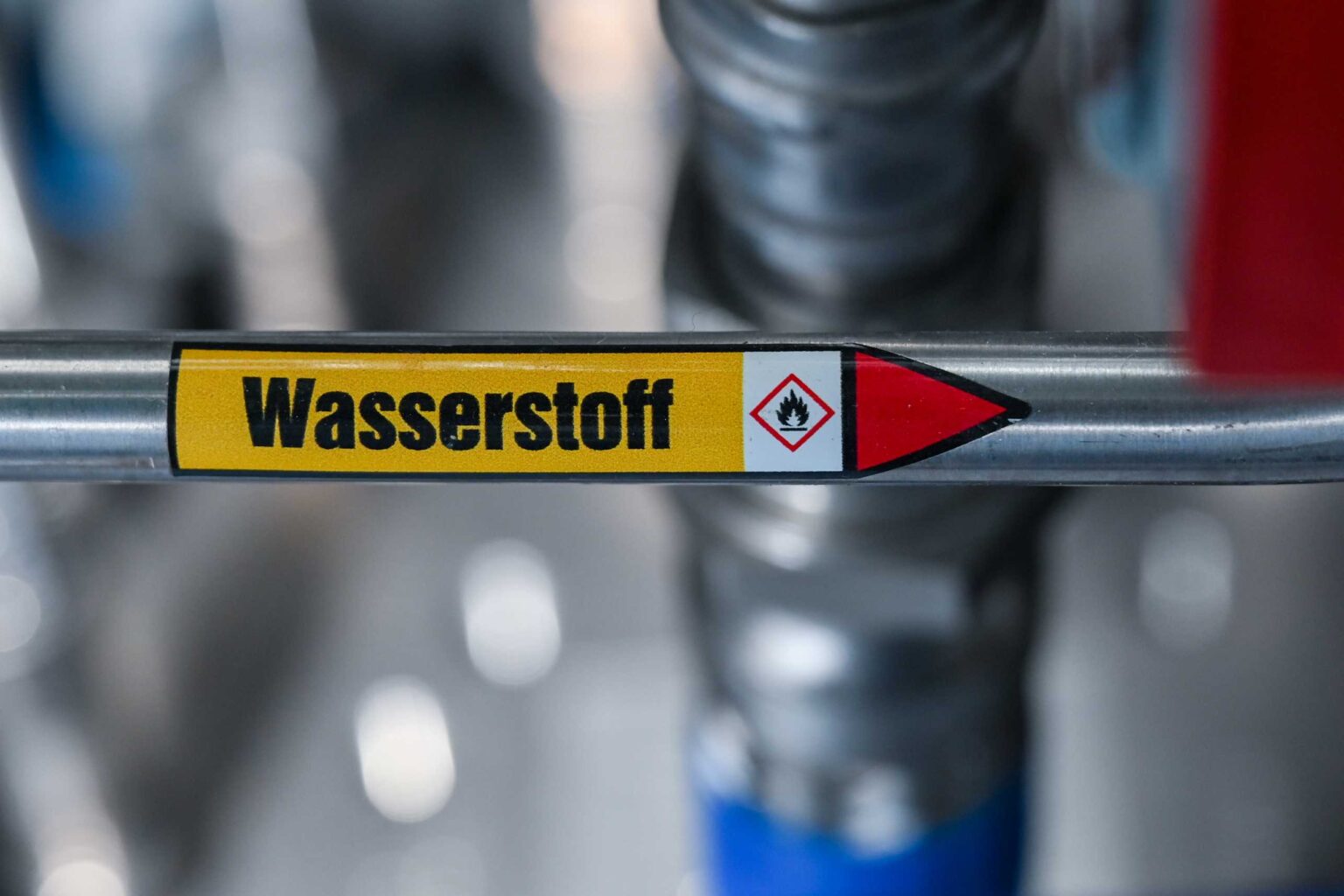
Hydrogen: handle with care
On 29.01.2024 by Anthony PattBy Anthony Patt
Anthony Patt is Professor of Climate Policy at the Institute for Environmental Decisions at ETH Zurich. Professor Patt’s research intends to identify successful governmental approaches for eliminating societal greenhouse gas emissions within a short timeframe, and to adapt to climate change.His research encompasses empirical appraisal of people’s beliefs, attitudes, and decisions, as well as modelling the interactions of people, institutions, and technological systems. Professor Patt together with his team have published their findings in over 100 articles in peer-reviewed journals, including Science, Nature, and Proceedings of the National Academy of Sciences.
For Anthony Patt, Europe’s ambitious plans for a hydrogen economy may be too ambitious, tipping the scales towards the interests of the fossil fuel industry, rather than energy consumers and the climate. Switzerland should be careful before jumping fully on board, he argues.
When produced and used properly, hydrogen can potentially play many roles in the transition towards clean energy and industrial systems. Hydrogen can directly replace natural gas and coal in industrial and manufacturing processes where high temperatures are needed, replace natural gas and heating oil to keep buildings warm, and replace gasoline and diesel fuel to power cars and trucks.
When combined with CO2 captured directly from the air, hydrogen can be used to manufacture carbon-neutral synthetic fuels, which could replace gasoline, heating oil, diesel and jet fuel, as well forming the feedstock for carbon-neutral chemicals and plastics.
And hydrogen can be used as a storage medium for electricity, outperforming batteries when it comes to storing large volumes of electricity over monthly or seasonal time scales. But hydrogen also poses several challenges.
The first is storing it. Energy is required to pressurize or chill the hydrogen. The small molecules tend to diffuse through many materials. There are promising new options, making use of nanomaterials and conversion of hydrogen into other chemicals for its storage, but these technologies are not yet mature. For now, storage costs are high.
The second challenge is producing it. Currently, nearly all hydrogen is produced from natural gas, releasing large volumes of CO2 into the atmosphere. This is known as grey hydrogen and needs to be phased out because of the CO2 emissions it causes.
Blue hydrogen is also produced from natural gas, but the CO2 is captured and permanently stored underground rather than being vented. Unfortunately, this results in large quantities of leaked natural gas, which is primarily methane – a powerful greenhouse gas.

Figure 1: Production of green hydrogen: Electrolysis with renewable energy splits water into hydrogen H2 and oxygen O2. H2 gas is transported by truck or via pipelines. (Photograph: scharfsinn86 / Adobe Stock)
The cleanest solution, green hydrogen, uses electricity from carbon neutral energy sources to split water into hydrogen and oxygen. But this is highly inefficient. By the time the hydrogen is ultimately consumed for heat or electricity, more than half of the energy content of the original electricity is lost (see also this blog post).
New concerns over hydrogen
Most recently, a third challenge has come to light: hydrogen leakage. Until recently, leakage had simply been viewed as an economic loss. But there is far more at stake. Leaked hydrogen reacts with scarce OH radicals in the atmosphere. That leaves fewer OH radicals to react with methane. Leaked hydrogen thus extends methane’s atmospheric lifetime, worsening its effects on the climate.
Researchers examined these factors together to evaluate the climate benefits of various hydrogen usage scenarios. Scenarios involving only green hydrogen deliver strong climate benefits relative to the fossil fuels that are replaced, assuming hydrogen leakage rates to be low. But as soon as blue hydrogen is introduced to the mix, and hydrogen leakage rates are assumed to be higher, the benefits decline, and in some cases disappear altogether. For example, a scenario with 30% blue hydrogen and leakage rates exceeding 3% would lead to more warming over a 20-year period than would the fossil fuels hydrogen replaces.1
How much hydrogen would actually leak?
The answer is that we don’t know, because very little research has been done. There is reason to believe that hydrogen would leak more than natural gas, and some estimates of natural gas leakage put it over 3%. The most comprehensive study to date estimates the likely leakage rate for hydrogen to be 2.9 – 5.6% but acknowledges that it might be higher.
There are powerful lobbying groups urging policy makers to expand the use of hydrogen as extensively as possible. The fact that these lobbyists are funded by oil and gas producers is no surprise. Not only does blue hydrogen make use of natural gas, but the business of distributing and selling hydrogen also matches the fossil fuel companies’ competitive advantage in the energy industry. Many people, me included, are extremely concerned about what ambitious plans for hydrogen usage could lead to, both for energy consumers and for the climate.
‘Hydrogen can help clean up the energy system, but it also carries risks. We must handle it with care and avoid using it where better alternatives exist.’ – Anthony Patt
Anywhere that direct electrification is possible – such as for heat pumps and battery electric cars and trucks – the costs to consumers of electrifying are far lower than switching to hydrogen or hydrogen-based fuels. Our energy models also show that costs for electricity consumers are far lower when policymakers guarantee supply security by maintaining European electricity trade, rather than moving towards independent national systems that require hydrogen storage to overcome local seasonal imbalances.
Across Europe as a whole there is a balanced supply of non-fossil electricity – wind, solar, hydropower and nuclear – which can supply year-round power without losing half of the energy to the conversion losses involved in storage. On top of these concerns come the recent insights into hydrogen’s contribution to global warming.
Policy makers are already facing challenges scaling up clean electricity production fast enough to phase out fossil generation over the next 20 years; adding the electricity demand of inefficient green hydrogen production will make this even harder. If energy users become locked-in to using hydrogen, but the clean electricity isn’t there to produce sufficient green hydrogen, then we will have to turn to blue hydrogen as a stop gap measure. That could be a catastrophe for the climate.
Restricting hydrogen to sensible applications.
The Swiss government, to its credit, has been far more reserved than many other European governments in embracing hydrogen. Recently, the Federal Council clearly stated that it envisioned using hydrogen only where direct electrification is impractical. The government needs to maintain this position and resist the pressure from the hydrogen lobby and fossil fuel industry for hydrogen to take on a larger role. But the government could do more to make sure things don’t go wrong.

Figure 2: There is currently a lot of political enthusiasm for hydrogen. However, which applications hydrogen should actually be used for is a relevant question that is not yet resolved. (Photograph: Keystone)
First, it could pass stronger regulations preventing any future use of grey or blue hydrogen. Second, it could work harder to secure Switzerland’s continuing participation in the European electricity market and transmission system, eliminating the need for hydrogen electricity storage, which is inefficient, costly, and potentially harmful for the climate. Third, it could join other countries in funding research on hydrogen leakage and the engineering solutions to prevent it, ensuring that where green hydrogen is used, it will not come at a cost to the climate.
Hydrogen will play a role in cleaning up the energy system and stopping climate change, but it also carries substantial risks. We must handle it with care and avoid using it where better alternatives are available.
Cover image: (Photograph: scharfsinn86 / Adobe Stock)
Keep up with the Energy Blog @ ETH Zurich on Twitter @eth_energy_blog.
Suggested citation: By Patt, Anthony. “Hydrogen: handle with care”, Energy Blog @ ETH Zurich, ETH Zurich, January 29th, 2024, https://blogs.ethz.ch/energy/hydrogen_handle_with_care
If you are part of ETH Zurich, we invite you to contribute with your findings and your opinions to make this space a dynamic and relevant outlet for energy insights and debates. Find out how you can contribute and contact the editorial team here to pitch an article idea!
1 The use of 30% blue hydrogen matches a policy proposal of one hydrogen industry trade group, the Hydrogen Council. The current policy proposal of the European Union is for 6% blue hydrogen. With 6% blue hydrogen, one third of the climate benefits over 20 years are lost if hydrogen leakage rates are assumed to be 5%, and three quarters are lost with 10% leakage.


Interessanter Artikel, die Risiken sind nicht zu unterschätzen. Da könnte doch das wenig bekannte Methanol eine Alternative sein.